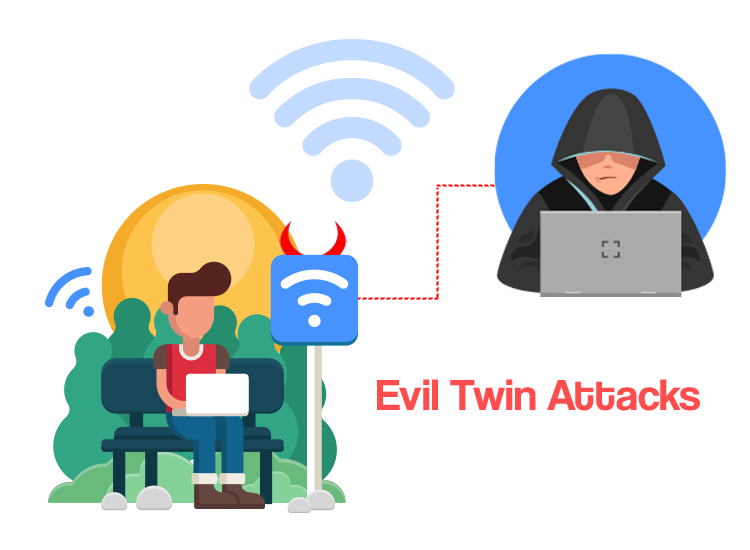
You have probably never wondered what evil twin attacks are. That might be because you did not hear how they work and how dangerous they can be.
Do not worry! We will let you know how they work and what you should do to avoid them.
Evil twin attacks explained
Evil twin attacks, also known as Evil Twin hotspots, are a form of cyberattack in which hackers take advantage of the poor security on public Wi-Fi connections. In order to do this, they set up malicious hotspots, where lots of people use public networks. So, any user connected to such a network is vulnerable.
Cybercriminals launch Evil Twin attacks to use their victims’ online sessions. Then, they monitor these and can steal personal data. Once they have it, they use it for identity theft, fraud, and phishing. Because their purpose is to make easy money.
But the dangers of such attacks do not stop here. Attackers can use them to install malware on their victims’ devices and take remote access to those. Then, they can use them to deliver spyware, Trojans, or keyloggers.
To trick users, villains set malicious hotspots in these places, and name them unsuspiciously. So, when victims connect to those, attackers intercept the communication and are even able to access their devices. Examples of such attacks are Man in the Middle and DNS hijacking.
Now, that you know all these things, we show you how to avoid these threats.
Learn how to avoid becoming a victim
There are a few things that any user should do, to avoid becoming a victim. Here they are:
- Make sure you turn off the auto-connect option, so your device does not automatically connect to any available network.
- If necessary, use only Wi-Fi connections that are password-protected. You can check if they are protected, by selecting the network properties, in the settings of your device. It should show WEP or WPA2 if this is the case. Still, remember that lots of people know the password of that network, so hackers might, too.
- Pay attention if a public network kicks you off. If you need to reconnect, the new connection might be a malicious one.
- Avoid logging in to personal accounts, when using public connections. Especially, avoid using them for banking or payment services. If you do not access sensitive data, attackers cannot access it.
- Check that you only access HTTPS-protected websites. The lock on the left side of the URL in the browser is the sign that the website is protected.
- Always use multi-factor authentication.
- Use strong and unique passwords for every account.
- Consider using a VPN connection, a firewall, and a strong antivirus solution, which includes real-time malware scanning. This prevents hackers from monitoring your online activity and stealing your credentials.
Now, that you know how these attacks work, and how you can protect your devices, you should never become a victim.

